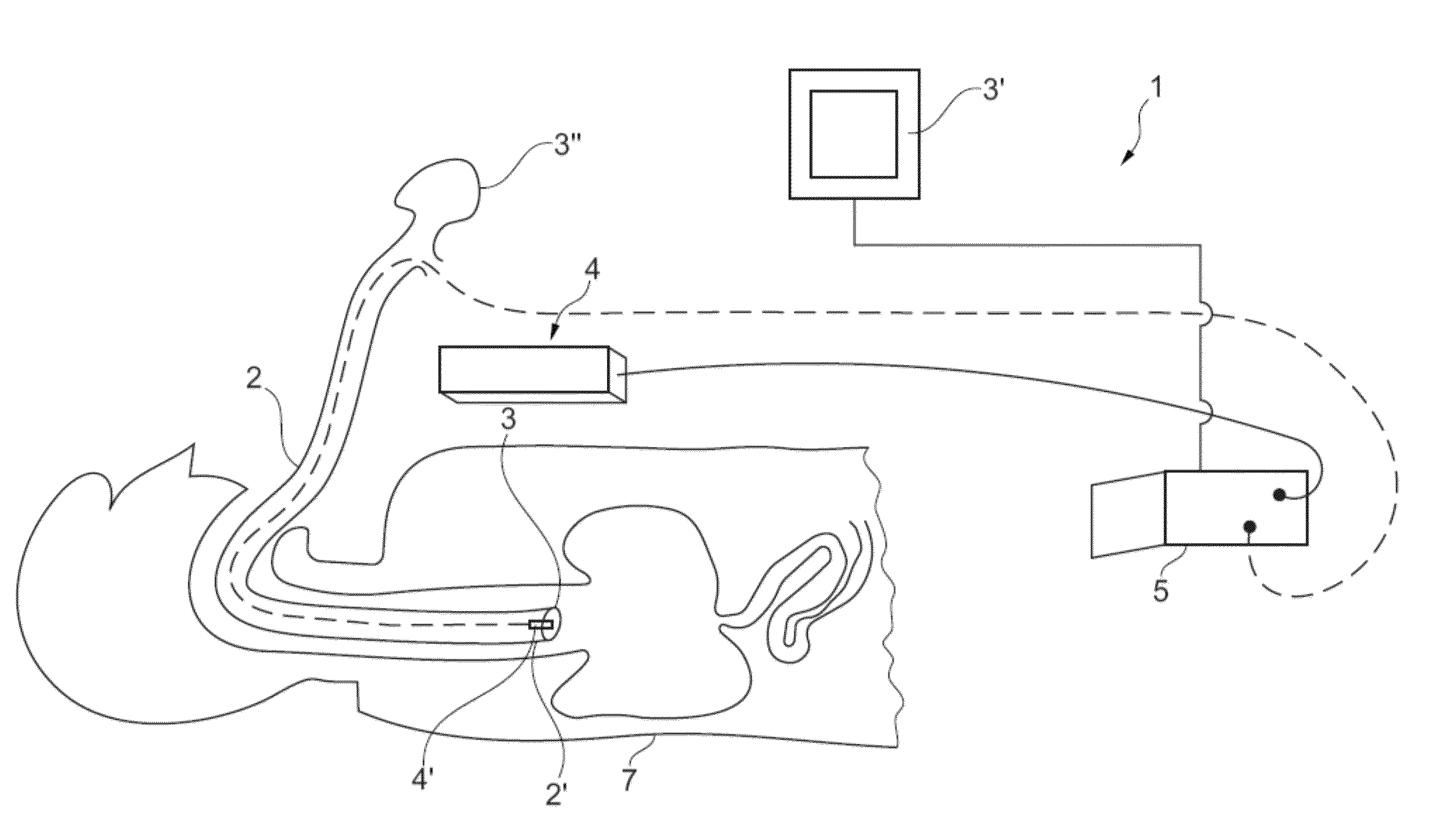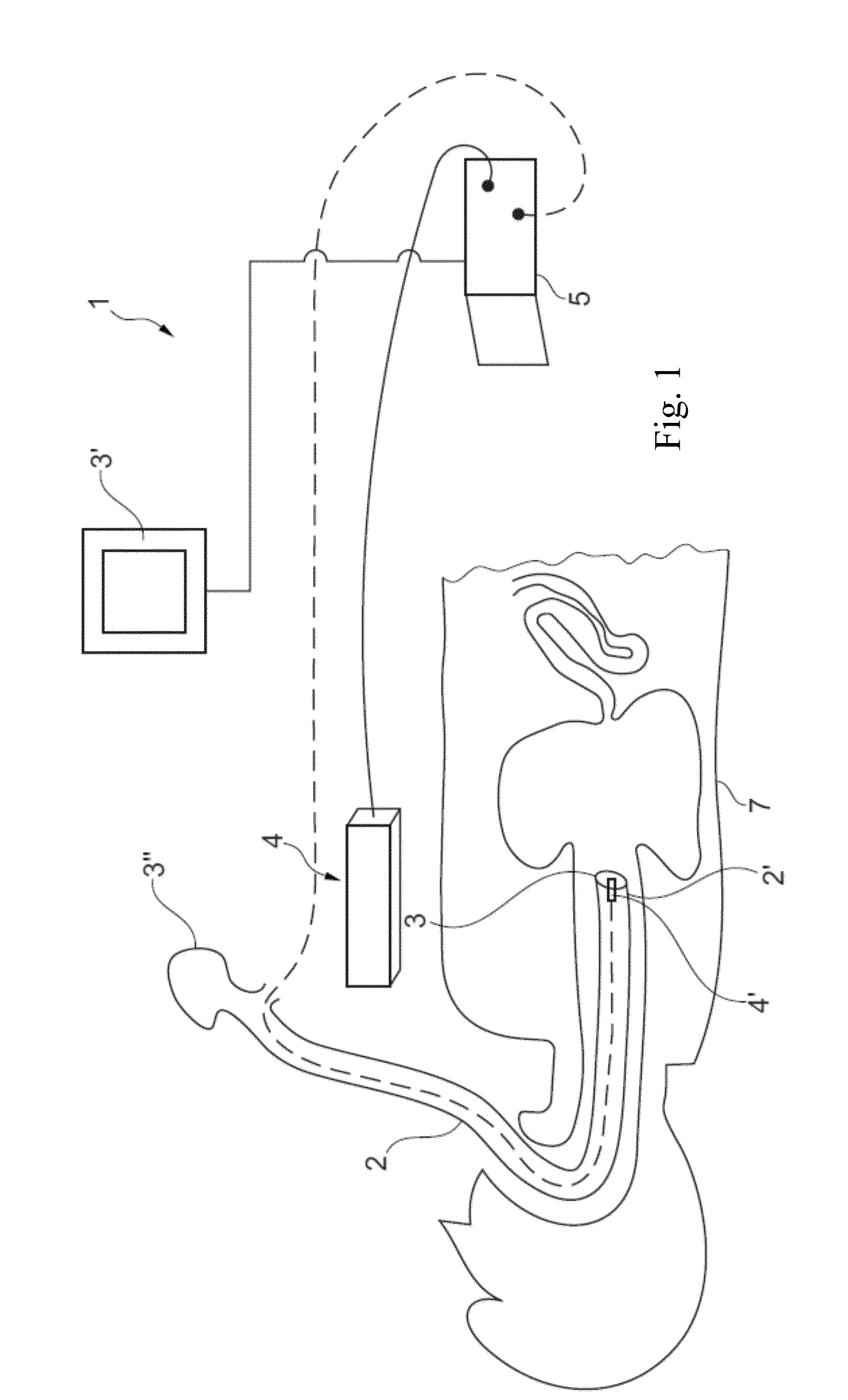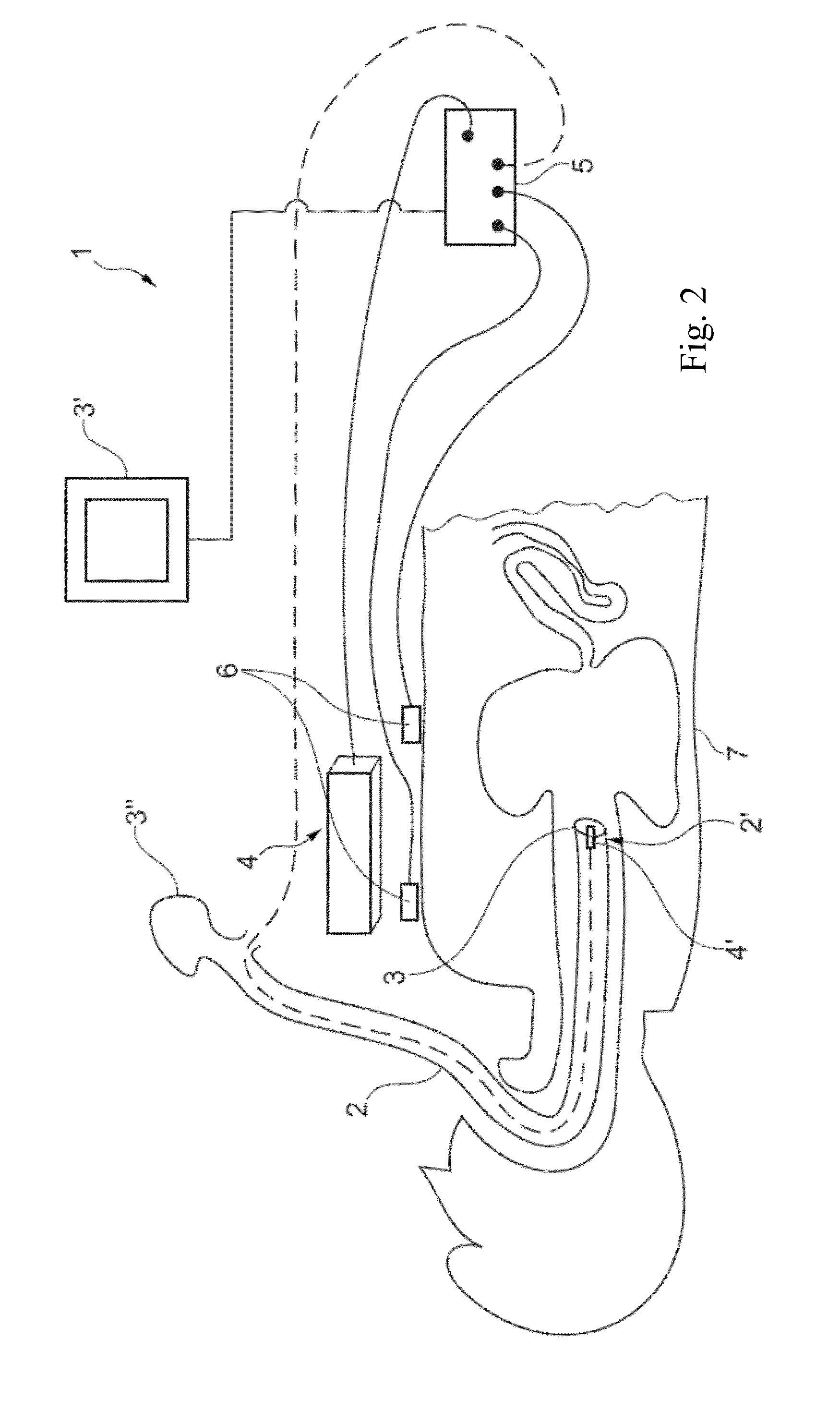Anatomical site relocalisation using dual data synchronisation
anatomical site and data synchronisation technology, applied in the field of anatomical site relocalisation using dual data synchronisation, can solve the problems of limiting the ability of the endoscopy and the optical biopsy probe to accurately reposition and thus to effectively, not providing any spatial relations of the extracted segments, and not sufficiently clarifying, so as to achieve the effect of increasing the accuracy of the relocation
- Summary
- Abstract
- Description
- Claims
- Application Information
AI Technical Summary
Benefits of technology
Problems solved by technology
Method used
Image
Examples
Embodiment Construction
[0074]FIGS. 1 and 2, and partially FIG. 9, show a medical system 1 according to the invention, comprising a flexible endoscope 2 which can be introduced in a tubular organ of a subject 7, and able to be used for performing the method according to the invention.
[0075]More precisely, said medical system 1 mainly comprises:
[0076]i) a flexible endoscope 2 at least equipped with an image taking device 3, and possibly at least one tool or instrument,
[0077]ii) display 3′ and movement control 3″ means associated with said endoscope 3,
[0078]iii) a tracking device or system 4 providing the location and orientation of the end tip 2′ of the endoscope 2, such as an electromagnetic tracking device or a flexible optical tracking device,
[0079]iiii) computer means 5 and associated storing means,
[0080]wherein the frontal or end tip 2′ of the endoscope 2 is provided with an electromagnetic sensor 4′ or a similar tracking device and said medical system 1 further comprises means, in particular software ...
PUM
 Login to View More
Login to View More Abstract
Description
Claims
Application Information
 Login to View More
Login to View More - R&D
- Intellectual Property
- Life Sciences
- Materials
- Tech Scout
- Unparalleled Data Quality
- Higher Quality Content
- 60% Fewer Hallucinations
Browse by: Latest US Patents, China's latest patents, Technical Efficacy Thesaurus, Application Domain, Technology Topic, Popular Technical Reports.
© 2025 PatSnap. All rights reserved.Legal|Privacy policy|Modern Slavery Act Transparency Statement|Sitemap|About US| Contact US: help@patsnap.com



